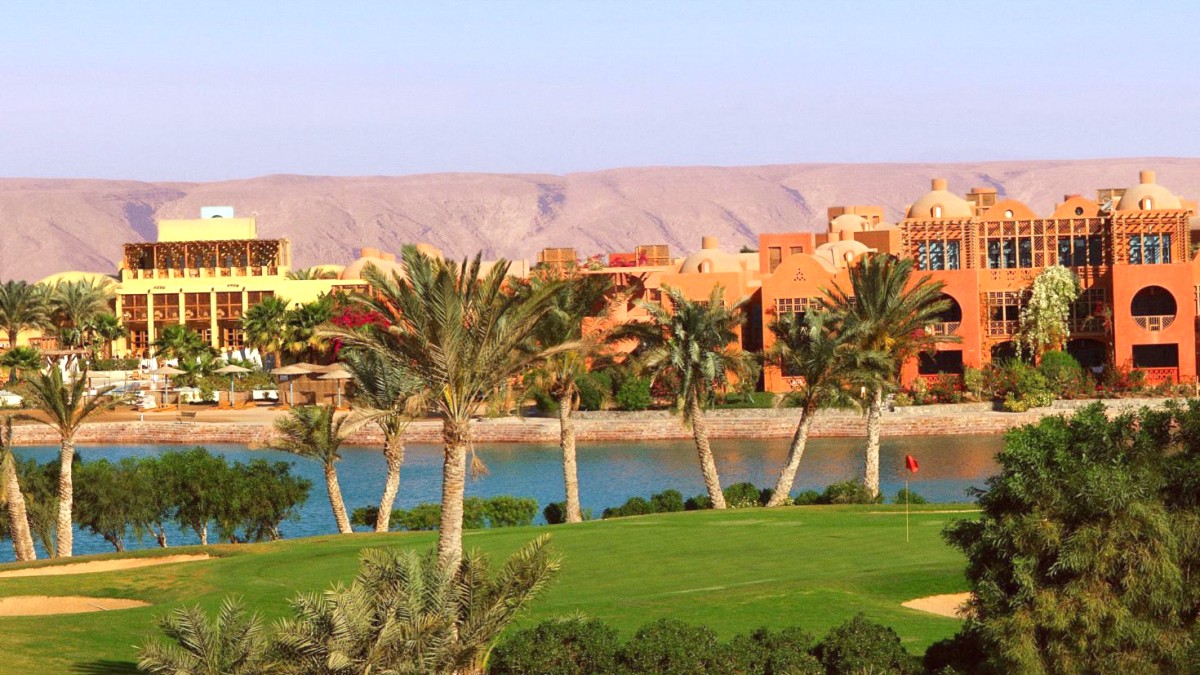
Egypt
Visitors discover a carefully planned network of islands and lagoons, all connected by bridges and waterways. This design means most properties have direct water access, whether a calm lagoon or the open Red Sea. The town’s architecture takes inspiration from traditional Egyptian and Nubian styles, creating charming streetscapes and a cohesive look. Palm trees line promenades, and bougainvillea contributes splashes of color, making the entire area visually appealing. Guests spend days by the pool, on the beach, or on the water.
El Gouna is a reputation for its calm and secure environment. Security measures operate throughout the town, yielding peace of mind for all visitors. This controlled setting means guests move freely, walking, cycling, or using the local transportation system. The town feels like a private enclave, allowing for a relaxed pace of life. It avoids the hustle of larger cities, presenting a tranquil retreat while still providing plenty of activities and dining options. This balance of peace and activity distinguishes El Gouna.
El Gouna maintains focus on environmental responsibility. It became the first destination in the Middle East and Africa to earn the "Green Destination" certification, acknowledging its commitment to sustainable tourism practices. Water conservation, recycling programs, and marine protection initiatives operate throughout the town. This dedication to ecological balance adds another layer to El Gouna's appeal for those who travel with a conscience.
El Gouna is along Egypt’s eastern Red Sea coast, approximately 25 kilometers (15 miles) north of Hurghada International Airport (HRG). This prime location places it within easy reach of a major international airport, simplifying access for visitors worldwide. This geographical position creates an unique blend of landscapes, from arid desert plains to sparkling blue waters.
The most distinguishing geographical feature of El Gouna is its intricate network of man-made lagoons. Developers designed the town to feature numerous islands connected by bridges and canals, giving most properties direct access to water. These lagoons present calm, protected waters suitable for swimming, kayaking, and Stand-up paddleboarding, offering a stark contrast to the open sea.
World-renowned for warm, clear waters and spectacular coral reefs.
Stretches inland, providing a dramatic setting for adventures.
Aids in pedestrian and cycling friendly design.
Hot, arid climate typical of the Red Sea coast.
Ideal for kitesurfing and windsurfing.
El Gouna’s coastal plain is relatively flat, which aids its pedestrian and cycling friendly design. The town benefits from its position away from large, bustling cities, presenting clean air and a quiet atmosphere. While connected to Hurghada by a well-maintained road, El Gouna maintains its distinct identity as a private, self-contained community. This geographical isolation, combined with its purpose-built infrastructure, yields the feeling of a private oasis.
The region experiences a hot, arid climate typical of the Red Sea coast, with sunshine almost year-round. This consistent sunshine makes El Gouna a reliable destination for sun-seekers, even during winter months. Low humidity keeps even warm temperatures comfortable for many. Geographical features like the surrounding desert and the Red Sea influence local weather patterns, contributing to the steady winds that make it a kitesurfing paradise.
The town’s location and careful planning maximize its natural assets, creating an appealing and functional environment for tourism. The artificial landscape integrates seamlessly with the natural environment, yielding a visually appealing and highly functional resort town.
El Gouna’s geographical position and design combine to form an unique Red Sea experience.
El Gouna is a town with a relatively short but impressive history, distinct from Egypt’s ancient past. It is not an ancient city that grew organically over centuries, but rather a meticulously planned and purpose-built resort town. Its story begins in the late 1980s when Egyptian billionaire Samih Sawiris, chairman of Orascom Development, envisioned creating a luxurious, self-contained community on the Red Sea coast. He sought to build a place that presented comfort and high-quality living, a stark contrast to the rapidly developing Hurghada to the south.
The idea for El Gouna came from Sawiris's personal desire for a peaceful retreat. He purchased a vast, undeveloped stretch of desert coastline with the aim of creating a town where he and his friends enjoyed water sports and relaxation. The initial concept was simple: a few villas and a small marina. However, the vision quickly expanded into a comprehensive, integrated resort town designed to attract international visitors and residents. The name "El Gouna" itself means "the lagoon" in Arabic, a nod to the town's defining feature.
Samih Sawiris's personal desire for a peaceful retreat evolved into a comprehensive resort concept.
Engineers transformed desert into a waterfront oasis with intricate lagoons and islands.
First in the Middle East and Africa to earn certification for sustainability.
The architectural style of El Gouna blends traditional Egyptian and Nubian influences with modern elements. Michael Graves, a renowned American architect, designed several of the early iconic buildings, including the Sheraton Miramar Resort. His work established the town's distinct aesthetic, characterized by domes, arches, and earthy tones that blend with the desert environment.
El Gouna presents a distinct and refreshing travel experience on Egypt's Red Sea coast. It operates as a self-contained, purpose-built resort town, designed for comfort and leisure. This destination appeals to a broad range of visitors, including families, couples, solo adventurers, and those seeking a tranquil escape from busy city life. It presents an unique atmosphere that balances relaxation with opportunities for active pursuits.
A town centered around a picturesque network of lagoons, connecting properties.
Inspired by traditional Egyptian and Nubian styles, aesthetically appealing.
Residential neighborhoods, essential services, and diverse leisure options.
Over 100 restaurants and bars, from Egyptian to international dishes.
Downtown (Tamr Henna Square) and Abu Tig Marina bustle with activity.
Variety of shops and boutiques for souvenirs and local items.